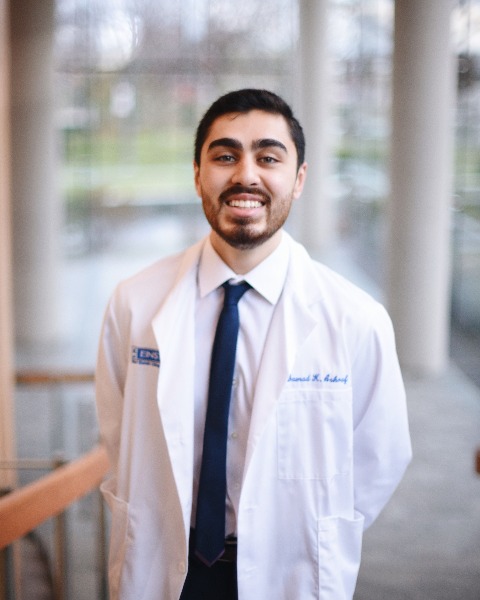SIR 2025
Portal Hypertension
Scientific Session
Transfemoral Transcaval Portal Vein Access to Assist in TIPS Procedures and Portal Vein Interventions: A Single-Center Experience

Samad Ashraf
Medical Student
Albert Einstein College of Medicine, United States
Paul M. Armenta, MD
Integrated Interventional Radiology Resident PGY-5
Montefiore Medical Center, United States- KW
Kapil Wattamwar, MD
Interventional Radiology Fellow
Montefiore Medical Center, United States 
Jacob Cynamon, MD, FACR, FSIR
Attending
Montefiore Medical Center, United States
Presenting Author(s)
Author/Co-author(s)
Portal venous access is required in many situations including TIPS, trauma interventions, or portal vein embolization. However, routine access to the portal vein can be challenging due to anatomical variations or portal venous thrombosis. Our institution has employed a technique involving transfemoral access, advancing a needle from the inferior vena cava directly into the portal vein. The objective of this study is to report our experience with transfemoral transcaval portal vein access to facilitate portal vein interventions when routine access is difficult or unfeasible.
Materials and Methods: A retrospective review was conducted of radiological and medical records of patients at an urban academic center. Patients who underwent transfemoral transcaval (TFTC) portal vein access from 2020-2024 were identified. Data on procedures, clinical indications, outcomes, and complications were recorded. Eight patients (M/F = 5/3, median age: 49.5 [18-74]) underwent an interventional radiology procedure requiring the advancement of a 21-gauge Chiba needle from the inferior vena cava (IVC) to either the portal vein (PV) or superior mesenteric vein (SMV).
Results: Seven out of the eight procedures were performed under general anesthesia. The median fluoroscopy time was 43.9 minutes [range 20.1-103.7] and the median total DAP was 462.6 Gycm2 [range 385.0-1314.0]. TFTC PV access was indicated in all 8 patients due to anatomical challenges such as thrombosed portal veins where the splenic vein was not easily accessible, situs inversus, and a large hematoma around the liver and the spleen, or other complex anatomy precluding routine PV access. Of the cases, seven involved TFTC PV access to assist with TIPS procedures while one case used TFTC PV access for portal vein embolization. Three patients had extrahepatic PV access from the IVC, four had intrahepatic PV access from the IVC and one had SMV access from the IVC. All patients tolerated the procedure well and there were no significant intra- or post-operative complications.
Conclusion:
Transfemoral transcaval portal vein access is a useful technique to assist with TIPS and portal vein embolization procedures in cases where routine access is unfavorable. Further study is required to determine the safety, efficacy, and frequency of acceptable anatomy seen in patients requiring portal vein access.


.jpg)